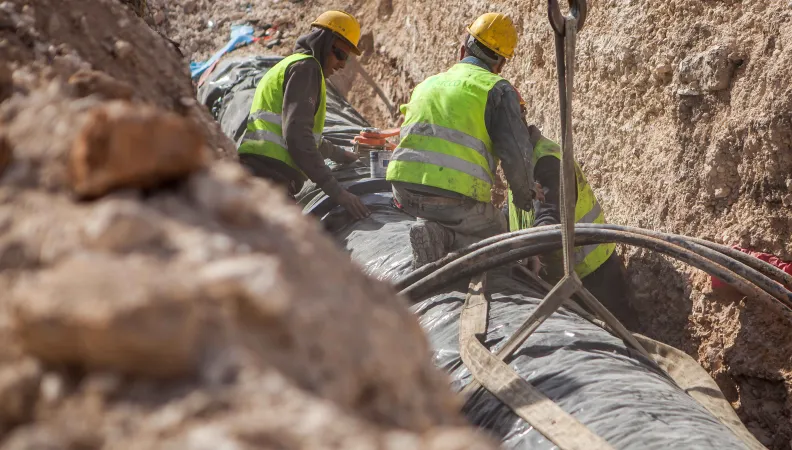Share the page
Rehabilitating and expanding water and sewerage services in the Copperbelt Province
Project


-
Project start date
-
Status
Ongoing
-
Project end date
-
-
Project duration
-
20 years
-
AFD financing amount
-
€ 50000000
-
Country and region
-
Location
-
Province de Copperbelt
-
Type of financing
-
Beneficiaries
-
Republic of Zambia
This project aims to extend and secure sanitation and drinking water services in three cities in Copperbelt Province, thus improving the living conditions of 530,000 people by 2050.
Context
In Zambia, access to water and sanitation is uneven across the country: 83% of Zambians living in urban areas had access to clean drinking water, compared to 50% of people living in rural areas in 2013 (latest available figures). The urban/rural divide extends to access to adequate sanitation: 57% of urban people compared to 34% of rural people in 2013.
The existing water and sanitation systems in the country are more than 50 years old, in a poor state and struggling to meet growing demand. In peri-urban areas, water and sanitation access rates remain low, as the infrastructure has not kept up with the pace of urbanization.
The Copperbelt Province, Northern Zambia, is the second most populous province in the country with some 2 million inhabitants, 60% of which live in underserved urban areas where access to drinking water and sanitation stands at 25% compared to national average of 38%.
Description
The project consists of investments to upgrade water and sanitation infrastructures in the three towns serviced by the Mulonga Water and Sewerage Company (MWSC). The project has four main components:
- Rehabilitation and extension works for the water and sanitation networks and infrastructure in urban areas, comprising water treatment plants, supply and transfer pipes, pumping stations and reservoirs, distribution networks, including connections, wastewater collection and transport networks and discharge stations, wastewater treatment facilities and sludge treatment systems;
- Provision of supplies and works to reduce non-revenue water, including macro-meters, individual meters, and measurement and leak detection equipment;
- Provision of supplies and works to extend water and sanitation services in peri-urban areas, including the installation of pipes, construction of water vending kiosks, connections, meters and sanitation facilities;
- Technical assistance for six years, with assistance to the implementation of the investment program and capacity building for MWSC.
Impacts
- Improved health conditions for people in the cities of Chingola, Mufulira and Chililabombwe, reaching a total of 460,000 residents (530,000 by 2020);
- Reduced prevalence of waterborne diseases, thus improving the health conditions of the population, their productivity at work, with positive impacts on their incomes;
- Reduced chore workload on women and children, who are more likely to take care of fetching water in low-income areas and informal settlements.


